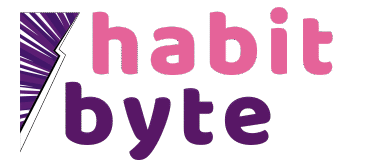What Is Vulnerability? Understanding Courage, Expression, and Play for Better Connection
Vulnerability is not oversharing or being weak. It’s the willingness to be seen,feelings, needs, hopes, and limits,without a guarantee of the outcome. Courage is what gets you to act anyway. Think of courage as the engine and vulnerability as the steering; together they help you move in the direction that actually matters to you. When you pair them with simple expressions of play and joy, you reduce stress, strengthen relationships, and feel more alive at work and at home.
Why it matters: research by Brené Brown links vulnerability to deeper belonging and resilience, Barbara Fredrickson’s broaden-and-build theory shows positive emotions expand creativity and problem-solving, and Amy Edmondson’s work on psychological safety finds that open, risk-tolerant environments outperform those ruled by fear. In short, honest expression and everyday play are not indulgences,they’re evidence-based tools for wellbeing and effectiveness.
How Courage, Expression, and Play Work Together
Vulnerability builds trust, courage makes change possible, and play lowers the stakes so you can do both more often. Imagine WD-40 for your nervous system: light, playful moments reduce tension, which makes speaking up and trying new things less threatening.
- Courage in action: Asking for feedback, setting a boundary, or starting a conversation you’ve been avoiding.
- Vulnerability in action: Naming a feeling (“I’m disappointed”), sharing uncertainty (“I’m not sure yet”), or admitting limits (“I can help until Thursday”).
- Play in action: A 3-minute dance break, a doodle during lunch, a silly voice while reading to a child,brief sparks that signal safety and joy.
Studies on self-disclosure (Aron et al.) show that thoughtful sharing increases closeness. Stuart Brown’s research on play connects it to adaptability and stress recovery. Together, these practices move you from “fine” to genuinely fulfilled: more connection, less anxiety, and a wider range of options when life gets complex.
Untangling Fear: Simple Reframes and Analogies
If vulnerability feels risky, you’re not broken,you’re human. Most of us were trained to avoid mistakes and keep the peace. Try these reframes to right-size fear:
- “I’ll embarrass myself.” Embarrassment is proof of participation. Like muscles after a workout, it’s a sign you showed up.
- “They’ll think less of me.” The right people think more of you when you’re real. Let your audience be those who earn your truth.
- “I need certainty first.” Clarity is a result of action, not a prerequisite. You learn by doing, then adjusting.
- “I’m not ready.” Readiness grows with reps. Choose a step that’s 10% stretchy, not 100% scary.
Analogy: Vulnerability is sunlight for connection,bright at first, but it helps the most important parts of you grow. Courage is the starting line; you cross it in small steps, often while your heart is still pounding.
Daily Practices to Build Courage and Connection
Two Truths and a Feeling
Once a day, share two facts and one feeling with someone you trust. Example: “I’m behind on a project. I rescheduled dinner. I’m feeling overwhelmed.” This normalizes naming emotions without drama.
30-Second Brave Ask
Identify one request that would meaningfully help you and send it in 30 seconds. Examples:
- “Could we push the deadline by one day?”
- “Can you watch the kids Saturday morning so I can recharge?”
- “Would you be open to quick feedback?”
Playful Micro-Yes
Say yes to one tiny playful thing daily: a song between meetings, a new walking route, a one-line poem on a sticky note. Joy lowers stress and widens your window for honest conversation.
The Honest Exit
End a draining commitment kindly. Script: “Thanks for thinking of me. I don’t have bandwidth to do this well, so I’ll pass.” Boundaries are courage in plain language.
Sticky-Moment Scripts
- When you’re anxious to speak: “I’m a bit nervous to share this, and it matters to me. Here’s what I’m seeing…”
- When you feel hurt: “When X happened, I felt Y. Can we talk about it and try Z next time?”
- When you need help: “Could you be a sounding board for 10 minutes?”
- When you’re a beginner: “I’m new to this and excited to learn. Any tips to start?”
Practical Takeaways and a Simple Weekly Plan
Turn ideas into action with a light structure that fits real life. Use this plan for two weeks, then adjust based on what worked:
- Monday,Name it: Write one truth you’re avoiding and one feeling about it. Decide the smallest honest step.
- Tuesday,Ask bravely: Send a 30-second request that would improve your day by 10%.
- Wednesday,Play on purpose: Schedule a 10-minute fun block before a tough task. Music, movement, or doodling,choose ease over perfection.
- Thursday,Connect deeply: Share “two truths and a feeling” with a friend or colleague.
- Friday,Reflect and reset: Note one win, one miss, and one adjustment. Courage grows through honest reps, not flawless weeks.
Bonus guidelines:
- Choose your audience wisely. Vulnerability is for people who have earned your trust, not every room you enter.
- Keep it specific. Ask for one clear thing; share one clear feeling. Specific beats sweeping declarations.
- Make joy non-negotiable. A playful nervous system is a braver nervous system. Treat fun as fuel, not a reward.
Big picture: practicing vulnerability, courage, and play isn’t about being loud or fearless. It’s about being honest and flexible,one conversation, one boundary, one micro-yes at a time. As research shows, those small behaviors compound into greater trust, creativity, and wellbeing. Start where you are. Choose one tiny step your body can say yes to today, and let that yes open the next one. That’s how armor loosens and authenticity takes the lead.
